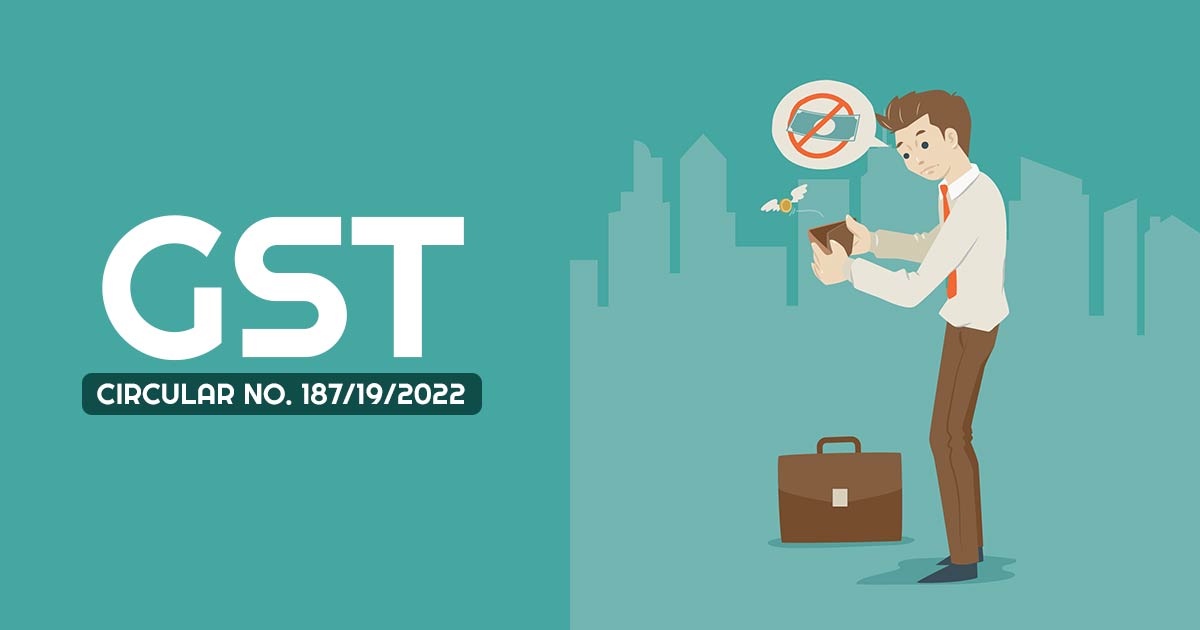
The Central Board of Indirect Taxes and Customs has made it clear that once a company enters the bankruptcy process, it cannot be made to pay back taxes, such as GST, in excess of the “reduced amount” established. Banks and investors will benefit from the change in a more assured way.
CBIC mentioned that when any government dues comprised of Central GST demand have been diminished complying with the IBC proceedings, the assessee is then issued with the intimation by the commissioner and the GST council with which the recovery is due, intimating about the demand reduction.
Tax experts mentioned that the circular implicitly rendered that when the proceedings would have been furnished to the NCLT then there is no coercive measure taken for recovering the tax dues since the final amount would not get revealed at the time of admission. “It has been clarified by the circular that recovery proceedings can continue only in relation to the reduced amount of government dues. This settles the dispute of the quantum of recoveries which can be done,” he articulated.
A corporation or limited liability partnership that misses payments of Rs 1 crore or more may be subject to the current regulations’ corporate bankruptcy resolution process. GST obligations are viewed as a form of operational debt. The clarification comes in response to a recommendation made at the 48th meeting of the GST Council on the handling of statutory dues under GST law for taxpayers for whom the IBC procedures have been concluded.
“Representations have been received from the trade as well as tax authorities, seeking clarification regarding the modalities for implementation of the order of the adjudicating authority under Insolvency and Bankruptcy Code, 2016 with respect to demand for recovery against such corporate debtor under CGST Act, 2017 as well under the existing laws and the treatment of such statutory dues under CGST Act and existing laws, after finalisation of the proceedings under IBC,” the CBIC stated.
The circular would save needless litigation and clear up long-standing uncertainty for indirect tax authorities dealing with issues regarding interactions with the IBC statute. The Insolvency and Bankruptcy Code supersedes all other Indian laws and mandates that all forms of recovery, including tax recovery, must be carried out in accordance with the resolution plan that was authorized during NCLT hearings. According to Jain, the Supreme Court in the case of Ghanashyam Mishra & Sons also upheld this.
“As per Section 84 of CGST Act, if the government dues against any person under Central Goods and Services Tax Act are reduced as a result of any appeal, revision or other proceedings in respect of such government dues, then an intimation for such reduction of government dues has to be given by the Commissioner to such person and to the appropriate authority with whom the recovery proceedings are pending. Further, recovery proceedings can be continued in relation to such reduced amount of government dues,” the CBIC articulated.
It further said that the phrase “other procedures” is covered since IBC proceedings also resolve government debts against the corporate debtor that are ongoing under the CGST Act or other laws, despite the fact that the term is not defined in the CGST Act. A notification decreasing the demand would be issued by the jurisdictional Commissioner in Form GST DRC-25.